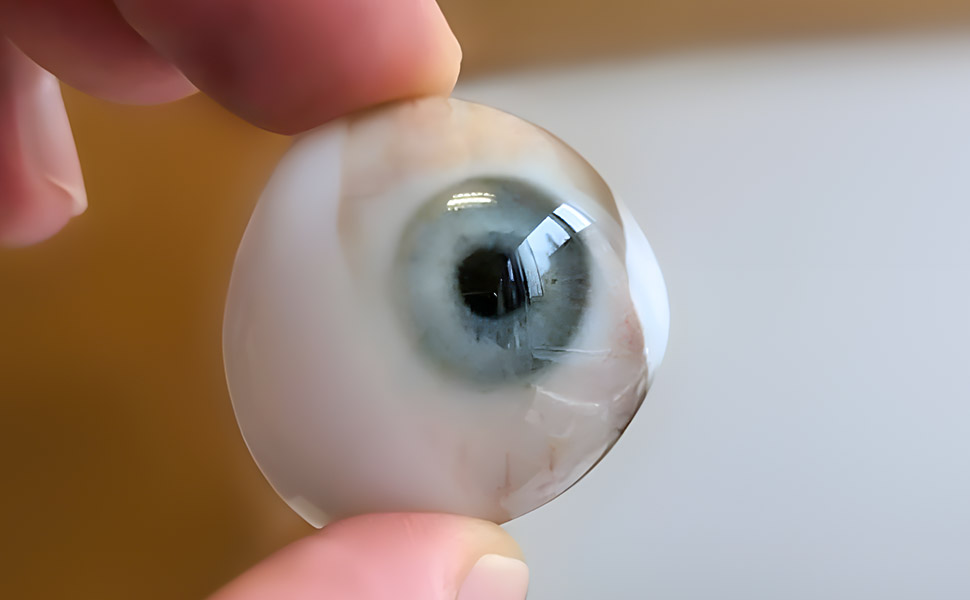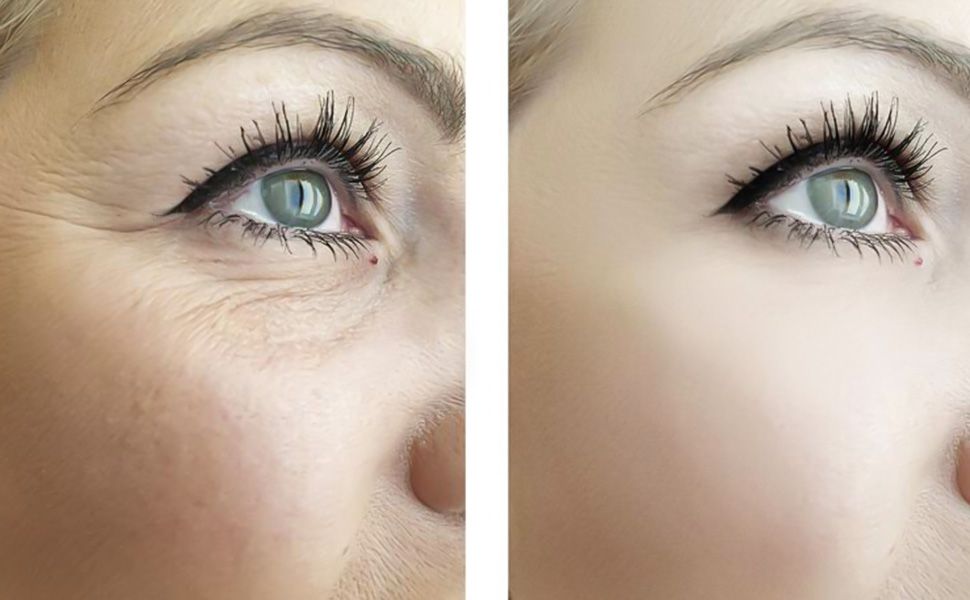
Tear duct obstruction, mouth at the root of the nose tear ductIt is a disease in which tears do not flow into the nose and instead overflow from the eye by pooling, if the tear narrows at any level or closes completely.
Channel full or partial may be clogged. tear ductThe eye cannot drain its existing tears properly. Itching, irritation, and constant tearing are common complaints. It can occur in all ages, including newborns.
Infancy tear duct obstruction A baby may be born with a blocked duct. The blockage may heal on its own. If it doesn't, surgical intervention may be necessary. Recovery usually occurs with medical or surgical treatment.
Tears, which keep the eyes moist, drain through a small opening at the base of the nose. The fluid flows into the nose, where it is absorbed or excreted by the body. tear duct, may be partially or completely blocked.
Tear duct obstruction Itching in the eyes is possible in the presence of erythema. Irritation of the skin around the eyes is possible due to constant tear flow or intense watering.tear duct obstruction another name for nasolacrimal is a channel obstruction.
In the natural eye structure, the function of tears is to keep the eye wet. This wetness should be at a level that protects eye health; excessive amounts are not enough. tear duct It will be expelled through the nose. The natural structure keeps the eye wet but does not provide excessive wetness.
Tears are produced in the lacrimal sac, located at the upper side of the eye. These tears are responsible for wetting the eye and maintaining the health of the upper eyelid.
After ensuring the eye is wet, tears are expelled from the opening called punctum at the root of the nose. tear duct The punctum is the starting point at the top of the tear duct. Tears passing through the punctum travel through the duct. The duct's termination point is the inside of the nose.
It begins with the opening called punctum inside the eye at the level of the root of the nose and progresses on a path passing through the facial bones, tear duct This channel, called the larynx, finally becomes the mouth for the nose.
Blocked tear duct In this case, tears cannot flow into the nose through this existing channel. Instead, tears accumulate in the eye.
Duct blockage Partial tearing manifests itself as watering in the eye. The duct provides partial drainage, but since it cannot perform its function fully, excess tears accumulate in the eye and then overflow from the eye.
If the duct is completely blocked, tears accumulate completely in the eye and then overflow. This condition causes an uncomfortable, tear-like appearance, which can lead to social distress.
Sometimes tear duct It can be narrowed in different ones before being installed. Narrowing of the tear duct (dacryostenosis) may cause partial obstruction of the tear duct.
In the case of a partial blockage, tears accumulate and cannot drain properly. This accumulation can lead to infection.
In newborns blockage of tear ducts It's common for a baby to be born with a blocked tear duct. A blocked tear duct can usually heal without treatment.
- Chronic eye inflammation such as uveitis
- Glaucoma
- Sinus surgery history
- Previous cancer treatments such as radiotherapy or chemotherapy
In adults tear duct obstruction incidence is increasing.
Tear duct obstruction It can occur at any age. The main causes of blocked tear ducts are:
Age: As we age, the punctum may narrow spontaneously.
Congenital obstructions: Some babies may be born with narrow or underdeveloped tear ducts (dacryostenosis).
Infection: Chronic sinus infections or eye infections can cause blockage.
Injury: Any eye injury near the tear ducts, even a post-traumatic cut or scratch, can cause a blockage.
Tumors: A tumor occurring anywhere near the tear ducts, especially in the nose, can cause blockage of the tear ducts.

Blockage of the tear duct The most common symptom is watery eyes or constant tears flowing out of the eyes. Other symptoms include:
- Blurred vision.
- Redness and irritation of the eyelid skin
- Pus-like discharge around the eyes
- Redness in the eyes
- Swelling near the inner corner of your eye, redness and warmth on the skin over this swelling.
Babies don't start shedding tears until they are a few weeks old. Therefore, a blocked tear duct in a newborn may not be immediately noticeable. As babies grow, tear duct obstruction symptoms are observed as follows.
- Redness around the eyes is often caused by the baby rubbing his or her eyes.
- Tears run down the baby's cheek instead of coming out of the corner of the eye.
- Tears accumulate near the corner of the eye but do not flow.
- Yellowish discharge, discharge or inflammation is observed in the baby's eye.
After the current findings and tests performed, the specialist ophthalmologist diagnosis of tear duct obstruction puts.
Irrigation and probing: Irrigation may use a liquid to clear the tear ducts, or your doctor may insert a small instrument through the corner of your eye to find the blockage.
Tear drainage test: If your doctor puts a drop of dye in each eye and the dye doesn't drain, they can determine that the tear duct is blocked. Normally, the dye should drain away.
In adults, treatment focuses on the cause of the obstruction. For example, if a tumor is present, treatment focuses on removing or shrinking it. Additional treatment options may include:
Medicines: If the blockage is caused by an eye infection, your doctor may prescribe oral antibiotics or medicated eye drops.
If there is dilation, probing and flushing: Your doctor will enlarge the opening in the corner of your eye. Then, using a small probe, they will flush fluid through your tear duct. This "flushing" usually clears the blockage, at least temporarily.
Stenting: Silicone tube placement involves the doctor inserting a small, hollow silicone stent through the punctum into the tear duct. This stent allows tears to drain properly. The silicone stent remains in place for approximately three to six months. A small portion of the silicone may be visible in the corner of your eye.
Balloon catheter dilatation: Your doctor inserts a small, deflated balloon into your tear duct. He or she then inflates the balloon several times to clear the blockage. This procedure is usually performed under general anesthesia (medication to help you sleep).
Snip punctoplasty: Your doctor makes two or three small incisions around your puncta. These incisions create a larger tear duct opening. Snip punctoplasty is a common treatment for partial blockages.

If other options don't provide relief, your doctor may recommend surgery. A dacryocystorhinostomy (DCR) is usually performed. This procedure creates a new pathway for tears to drain into your nose. On the day of surgery, the surgery is performed under general anesthesia. During the procedure, the surgeon:
- It creates a new connection between your tear duct and your nose.
- The surgeon makes a small incision and creates a new path through which the tear can flow.
- He or she inserts stents (small, hollow tubes) to keep the new pathway open while it heals.
Dacryocystorhinostomy surgery You can usually go home the same day after surgery. Typically, your surgeon removes the silicone tubes after three to four months.
Most of the time, a blocked tear duct in a newborn baby resolves without treatment within the first few months of life. baby's tear ducts may become obstructed as the nose matures. Sometimes a baby still has a small piece of tissue in their nose that blocks the flow of tears.
Your baby's doctor will teach you a special eyelid massage technique. This massage helps open the tissue so tears can flow properly.
If close monitoring doesn't work, your doctor may use dilation and irrigation, balloon catheters, or stents. These treatments work the same way in infants as they do in adults. However, they are performed under general anesthesia to keep babies still and calm during the procedure.
Blockage of the tear duct The best way to prevent eye inflammation, infection, or injury is to intervene immediately. To prevent eye inflammation or infection:
- Avoid rubbing or excessively touching your eyes.
- Avoid sharing eye products such as eye drops or cosmetics with others.
- Clean your contact lenses according to your eye doctor's instructions.
- Replace cosmetics such as mascara, eyeliner, or eye shadow every three to six months.
- Wash your hands frequently and thoroughly.
Tear duct obstruction If it is caused by an injury, it usually resolves on its own once the injury heals.
Blocked tear ducts in babies It often opens over time or with home care. Especially after tear duct obstruction surgery. başarı oranı %90 Most people have no further symptoms after treatment.







